Abstract
1 Nine normal subjects volunteered to participate in a randomized single-blind crossover study of nomifensine 75 mg and two comparators, imipramine 75 mg and placebo.
2 Each volunteer received placebo for 3 d, then the first test drug for 4 days. This sequence was repeated twice more, so that each subject received each comparator. All medication was taken three times daily.
3 Assessments were made on days 3, 5 and 7 of each sequence, and consisted of a Sleep Evaluation Questionnaire, a test of Critical Flicker Fusion and a measurement of Complex Reaction Time (CRT).
4 There were no significant differences in the CRT. There was a significant increase in critical flicker fusion with nomifensine.
5 Although both nomifensine and imipramine disturbed the quality of sleep, only imipramine produced a hangover.
Full text
PDF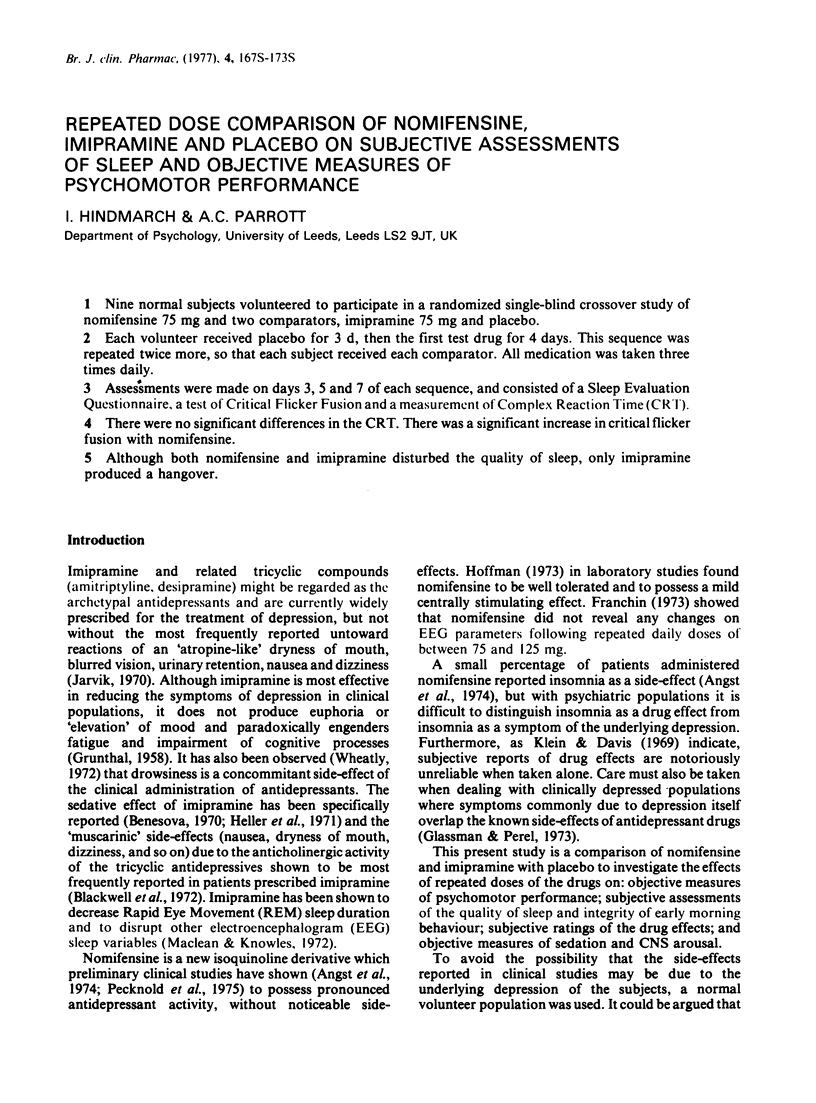
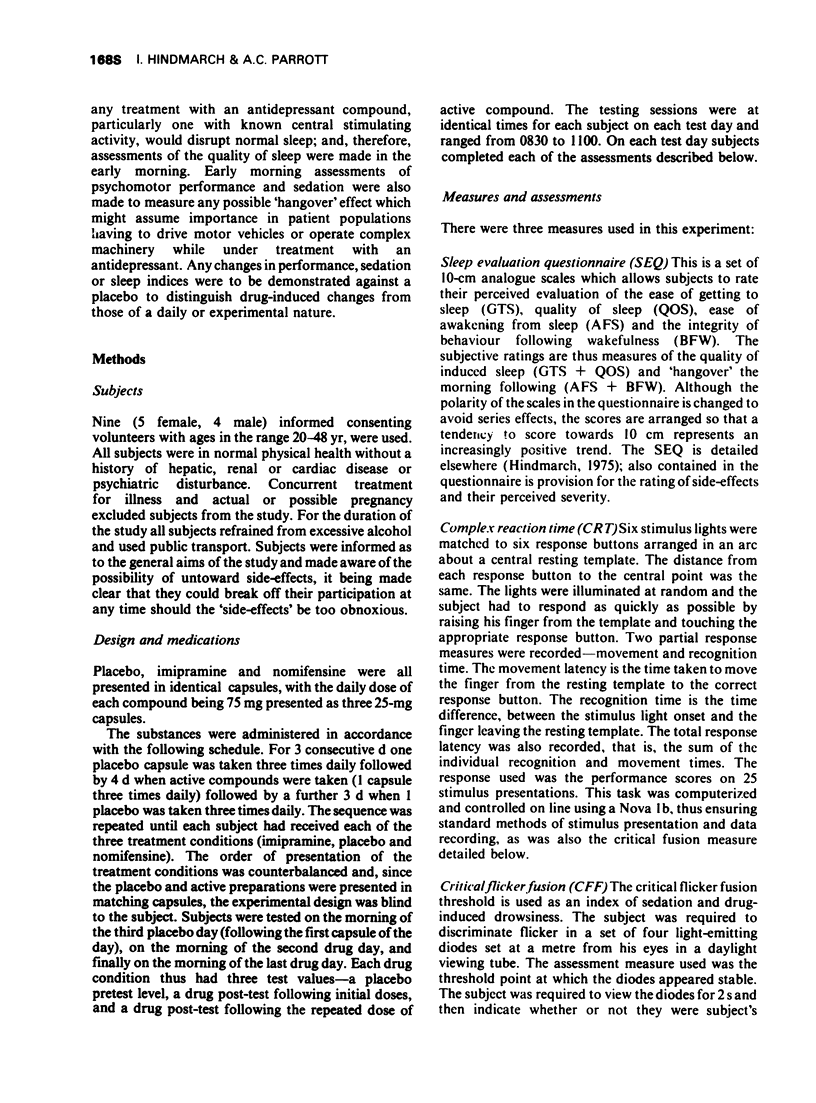
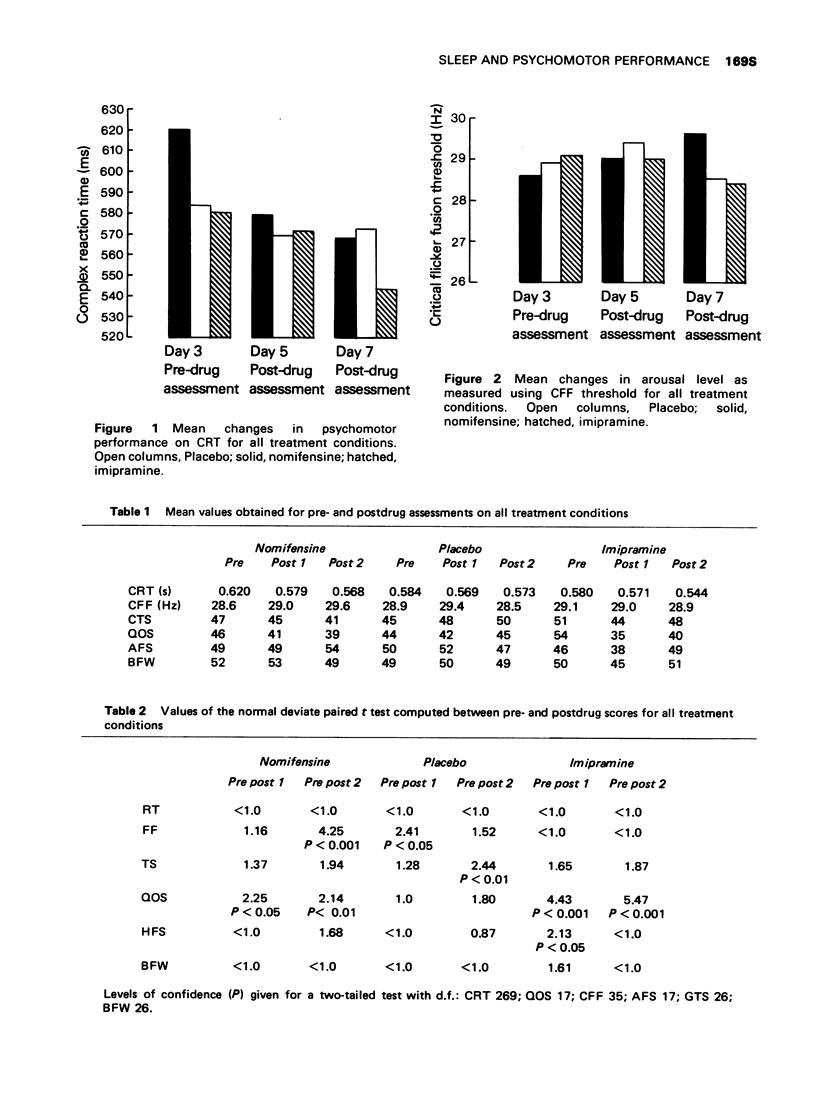
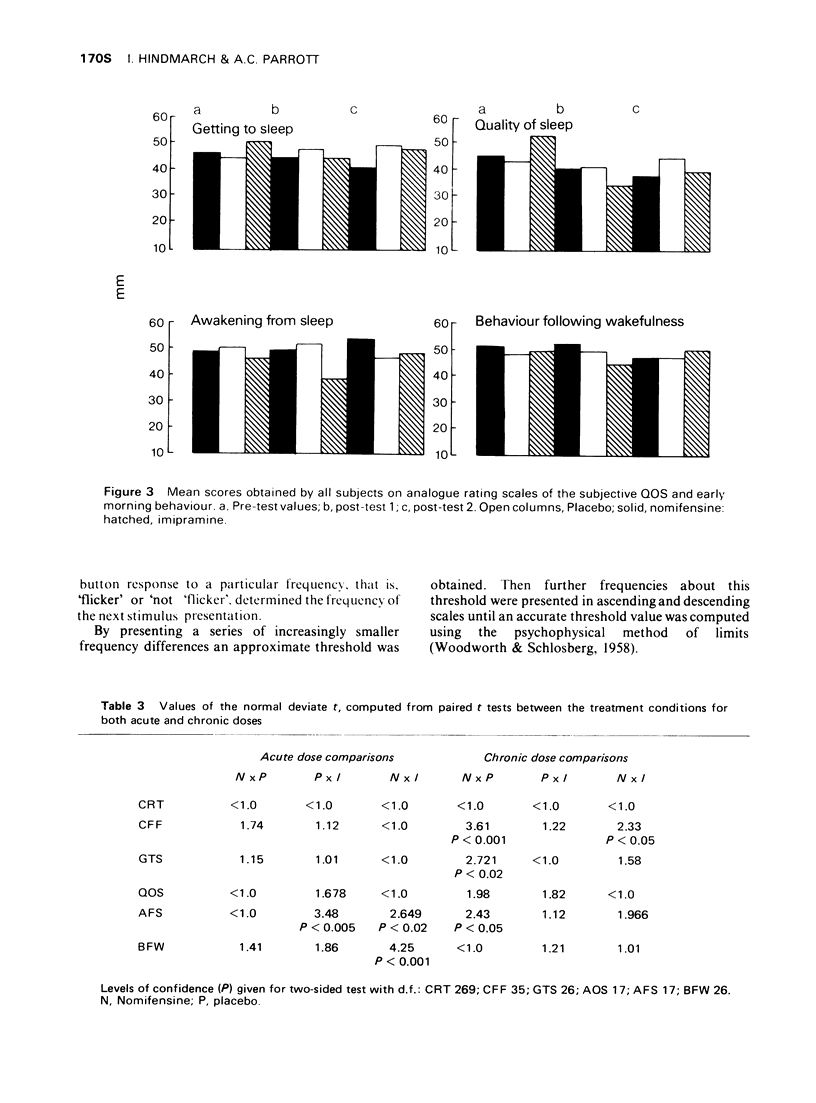
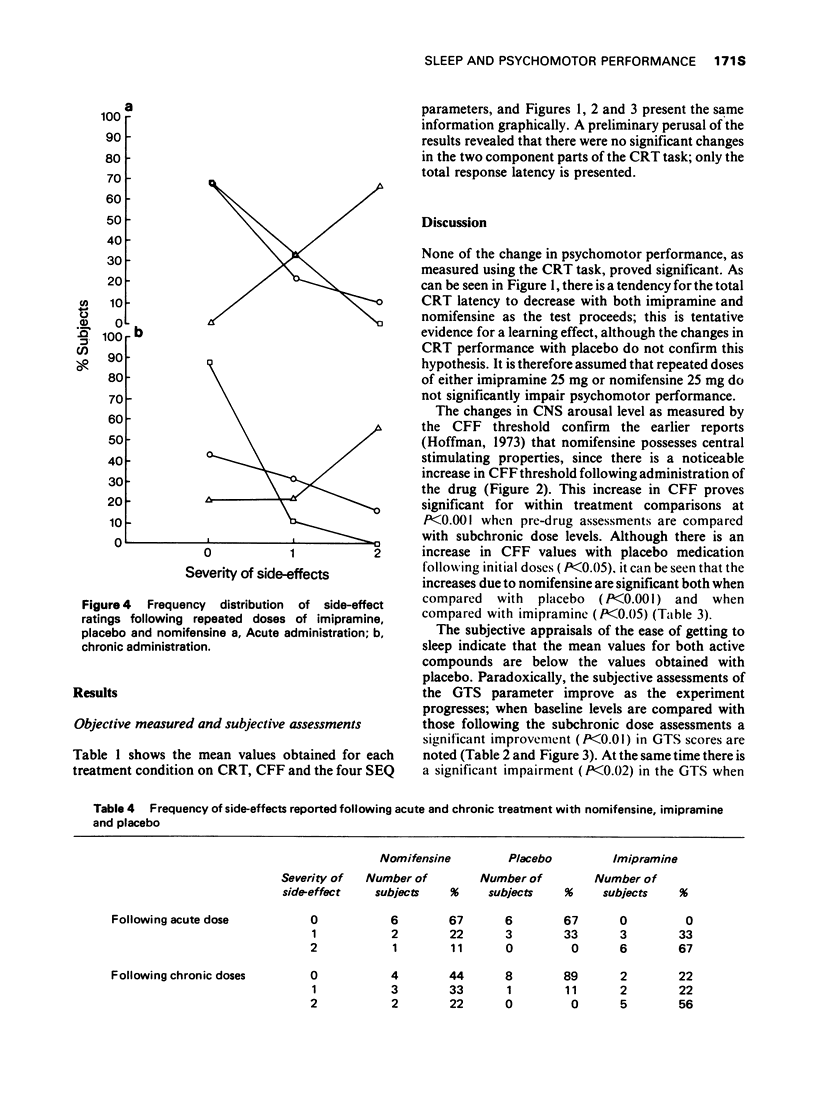
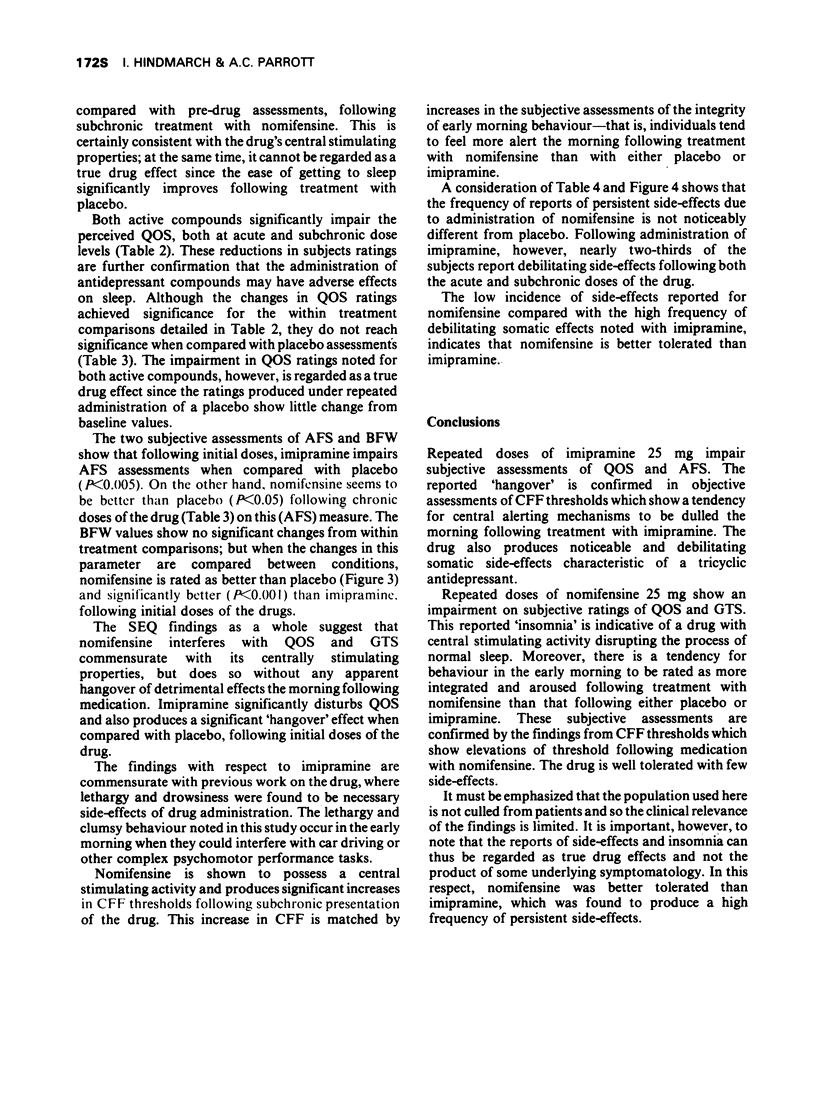
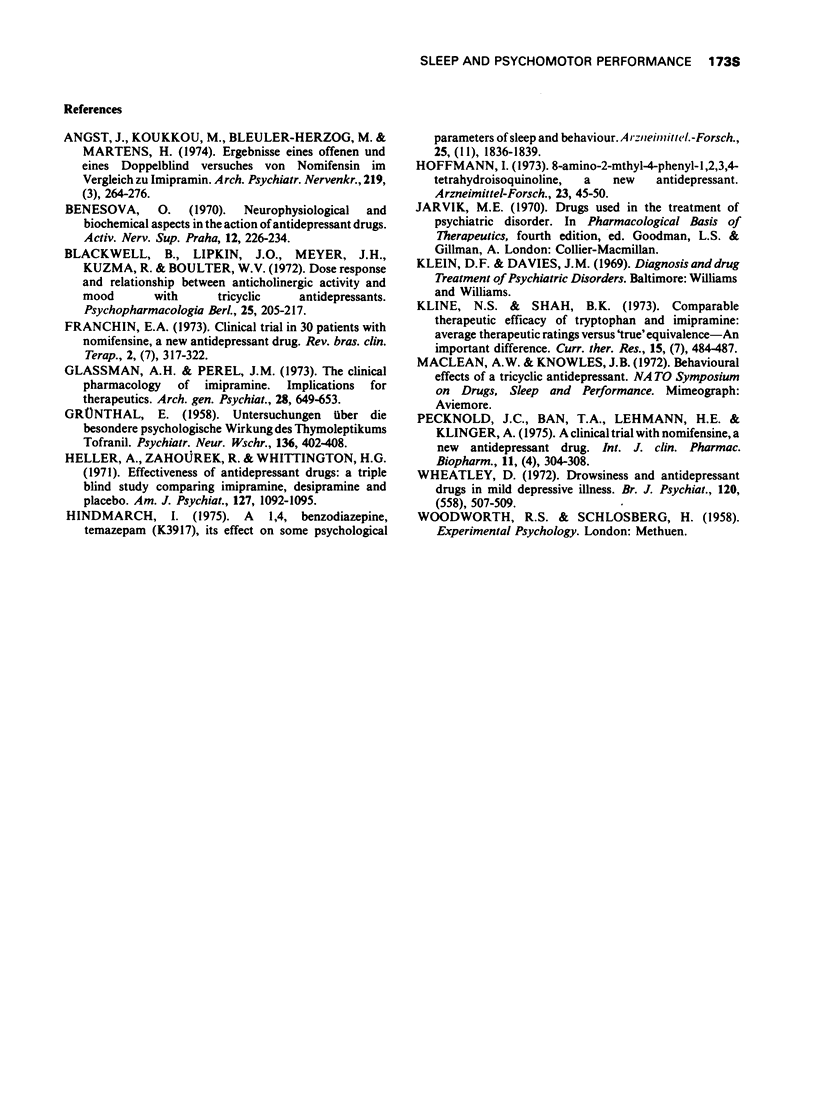
Selected References
These references are in PubMed. This may not be the complete list of references from this article.
- Angst J., Koukkou M., Bleuler-Herzog M., Martens H. Ergebnisse eines offenen und eines Doppelblindversuches von Nomifensin im Vergleich zu Imipramin. Arch Psychiatr Nervenkr (1970) 1974;219(3):265–276. doi: 10.1007/BF00342052. [DOI] [PubMed] [Google Scholar]
- Benesová O. Neurophysiological and biochemical aspects in the action of antidepressant drugs. Act Nerv Super (Praha) 1970;12(3):226–234. [PubMed] [Google Scholar]
- Blackwell B., Lipkin J. O., Meyer J. H., Kuzma R., Boulter W. V. Dose responses and relationships between anticholinergic activity and mood with tricyclic antidepressants. Psychopharmacologia. 1972;25(3):205–217. doi: 10.1007/BF00422502. [DOI] [PubMed] [Google Scholar]
- Glassman A. H., Perel J. M. The clinical pharmacology of imipramine. Implications for therapeutics. Arch Gen Psychiatry. 1973 May;28(5):649–653. doi: 10.1001/archpsyc.1973.01750350029006. [DOI] [PubMed] [Google Scholar]
- Heller A., Zahourek R., Whittington H. G. Effectiveness of antidepressant drugs: a triple-blind study comparing imipramine, desipramine, and placebo. Am J Psychiatry. 1971 Feb;127(8):1092–1095. doi: 10.1176/ajp.127.8.1092. [DOI] [PubMed] [Google Scholar]
- Hindmarch I. A 1,4-benzodiazepine, temazepam (K 3917), its effect on some psychological parameters of sleep and behaviour. Arzneimittelforschung. 1975 Nov;25(11):1836–1839. [PubMed] [Google Scholar]
- Hoffmann I. 8-Amino-2-methyl-4-phenyl-1,2,3,4-tetrahydroisoquinoline, a new antidepressant. Arzneimittelforschung. 1973 Jan;23(1):45–50. [PubMed] [Google Scholar]
- Kline N. S., Shah B. K. Comparable therapeutic efficacy of tryptophan and imipramine: average therapeutic ratings versus "true" equivalence. An important difference. Curr Ther Res Clin Exp. 1973 Jul;15(7):484–487. [PubMed] [Google Scholar]
- Pecknold J. C., Ban T. A., Lehmann H. E., Klingner A. A clinical trial with nomifensin, a new antidepressant drug. Int J Clin Pharmacol Biopharm. 1975 Jun;11(4):304–308. [PubMed] [Google Scholar]
- Wheatley D. Drowsiness and antidepressant drugs in mild depressive illness. Br J Psychiatry. 1972 May;120(558):507–509. doi: 10.1192/bjp.120.558.517. [DOI] [PubMed] [Google Scholar]


